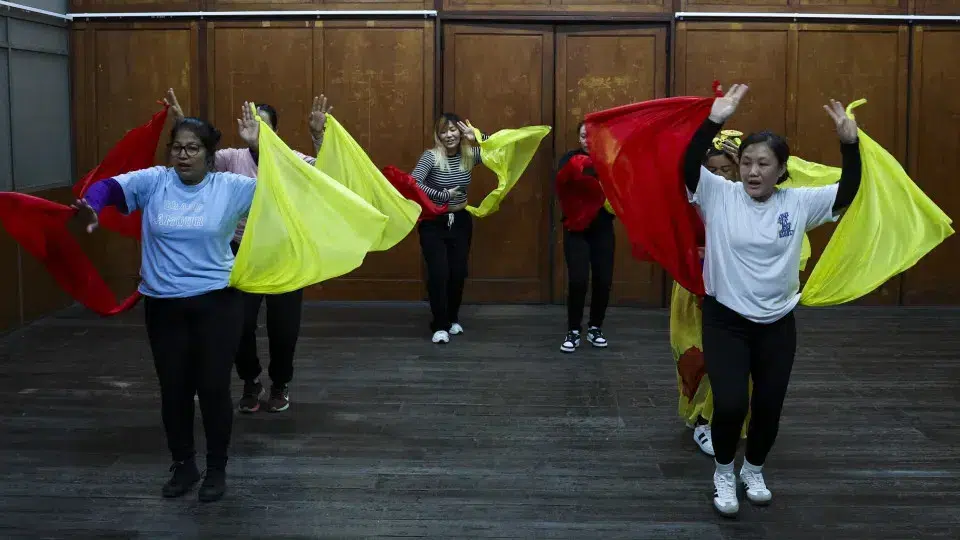
During one of the rehearsals for the performance “Rumor,” directed by Madalena Victorino, a Nepalese song is heard as participants climb the stairs of the old Inatel building, located near the now-closed Estação Nova in the city’s Baixa area.
Women with scarves in hand practice a dance on the top floor of the building, which has been closed for several years, in a room preceding the entrance to the stage of the former Inatel.
On the other side of the door, close to the stage, traditional Portuguese music plays while other dances, positions, and moments are fine-tuned with some apparent chaos—a result of a production involving around 80 people, including some professional dancers.
The show, presented on Saturday and Sunday, gathers all performers to discuss tourism as a rumor, an almost ghostly presence affecting the city, creating caricatures, transforming Coimbra’s identity, and bringing in other inhabitants.
The project began as a challenge by Catarina Pires of the Há Baixa Association to choreographer Madalena Victorino to adapt “Rumor,” originally created in the Algarve, to Coimbra. The Algarve version focuses on the area’s transformation through tourism.
The work includes research by anthropologist Pedro Prista, who has extensively studied tourism, developing the concept he calls “a coisa T,” describing how the transformation of cities and places occurs almost invisibly, according to Madalena Victorino.
“In essence, tourism is a rumor, present everywhere, always in our lives,” she adds.
In Coimbra, the focus is on the transformation and destruction of the university city in the 1960s, its shift toward tourism, with the university itself “very focused on tourist movements,” says the choreographer.
“Walking through the university corridors, we encounter tourists. On the streets, students drape tourists with their coats for photos and perform acrobatic dances perhaps to earn some money. The university, as a place of knowledge and discovery, seems diluted or ailing,” she notes.
The performance will feature Portuguese and Nepalese cuisine and ‘minis,’ conveying the bohemian and festive spirit of the student city.
The music will include both Nepalese songs and rock, as well as traditional tunes from the Centro region by the Grupo Etnográfico da Região de Coimbra, based in Baixa.
The Nepalese community, “very hidden” in the city, becomes visible in “Rumor,” blending into the fabric of the show to demonstrate the possibility of experiencing cultural crossover and mixing, emphasizes Madalena Victorino.
“The performance aligns with Há Baixa’s ongoing concerns, particularly reflections on city transformations and creating opportunities for different communities to meet,” in addition to reactivating “a dormant space” in Baixa, says Há Baixa President Catarina Pires.
According to Pires, the Nepalese community has been settling in Coimbra in recent years, particularly in Baixa, with some members working in hospitality and catering.
“It has been a very fruitful and interesting collaboration,” noted Catarina Pires.
She views this as an opportunity to engage with a community “living and embodying Baixa,” hoping that the show and its process serve as a meeting point: “Only face to face and hand in hand can we coexist harmoniously.”
The performance is organized by Há Baixa and the Lavrar o Mar Cooperative in partnership with Inatel, supported by the Direção-Geral das Artes, Câmara de Coimbra, and other partners.




